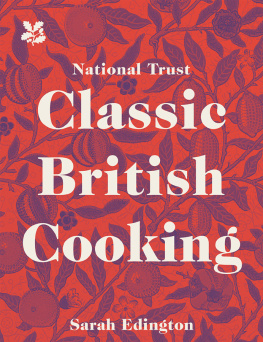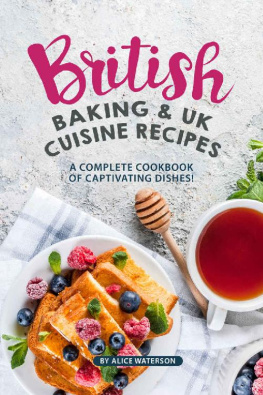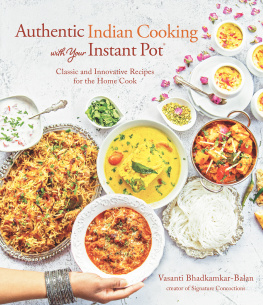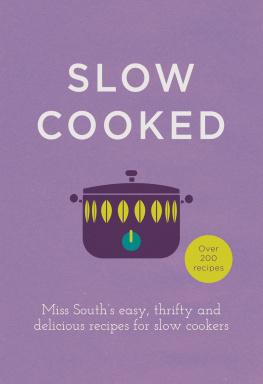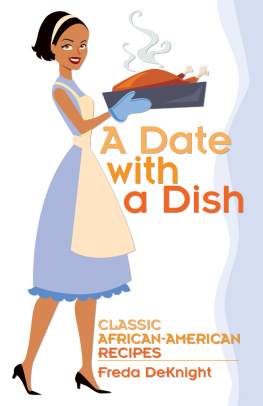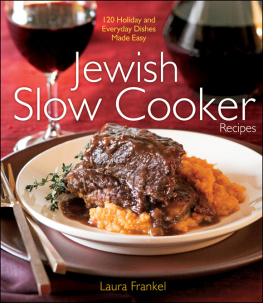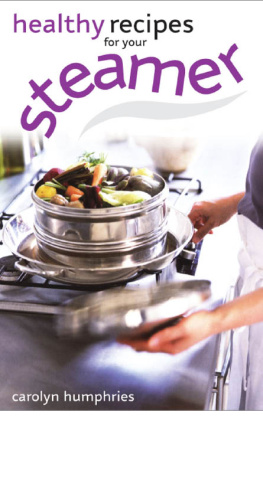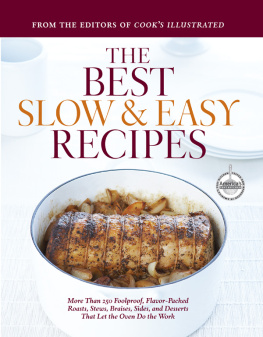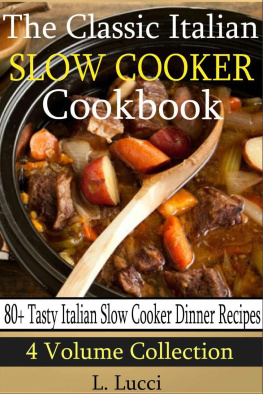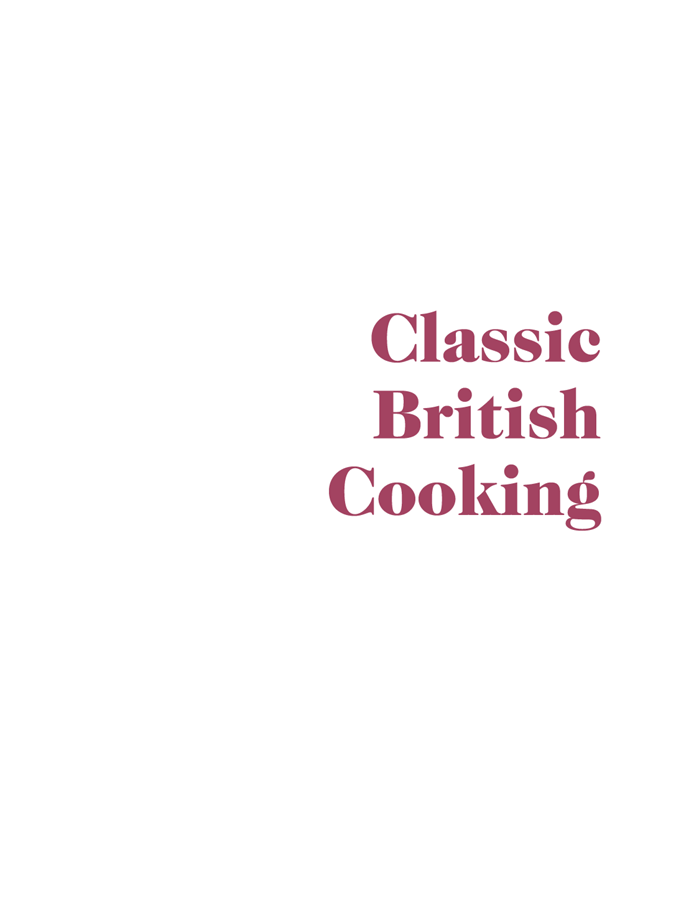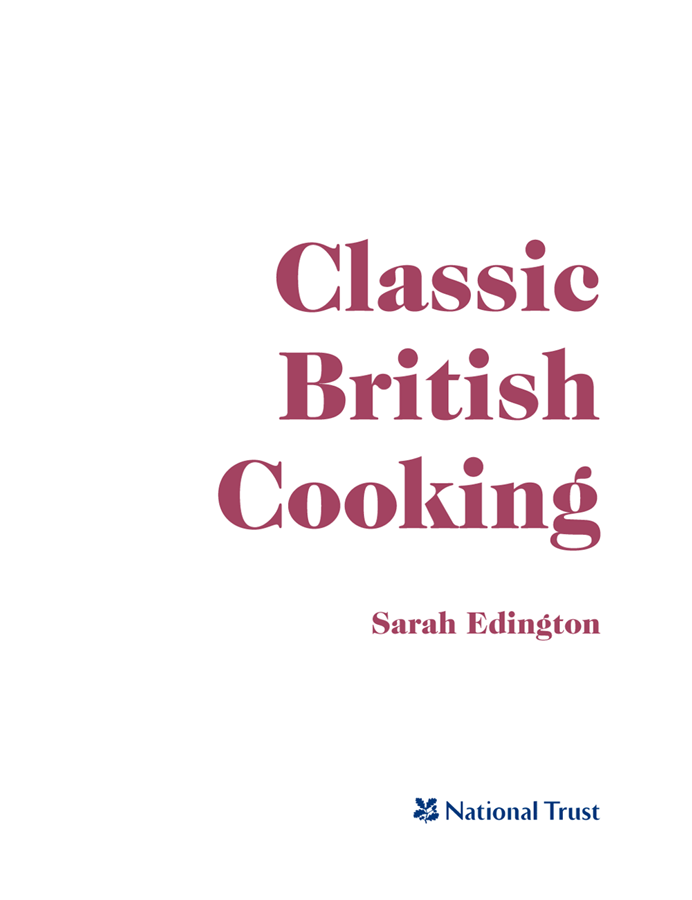Contents
Guide

Contents
Introduction
Welcome to Classic British Cooking. This book is a celebration of British cooking, complete in the sense that it contains recipes across the whole spectrum of traditional British food from soups to drinks, via fish, meat and vegetable dishes, together with sweet and savoury sauces. Those high spots of British cooking, puddings and teatime recipes, are also well represented, with more than 50 recipes for hot and cold puddings, and more than another 50 recipes for breads, tea breads, cakes, scones and biscuits. We have not forgotten recipes for preserves, drinks and even confectionery.
The recipes are mostly modern versions of traditional recipes from all over the United Kingdom. They reflect two strands of cooking the posh, and the more homely. Recipes from the more prosperous kitchens were those most likely to be written down, but we also know the basic ingredients for pottage, the ancestor of soup vegetables for the less well-off, fish or meat for the rich and there are modern recipes for pottage, and for soup, here. Much baking, especially on a griddle, was done in the poorest homes with only a simple hearth, as well as in the well-equipped kitchens of the grander households. So you will find griddle recipes for Welsh Cakes, Drop Scones and the delightfully named Singin Hinnies. Some recipes are elaborate and take time, but some are very simple. A number of these recipes have hardly changed in hundreds of years, while others are modern versions of the original. At the top of each recipe I have provided a short explanation of why I have chosen it, how it got its name or its history.
The original sources for this book are four books of recipes that I collected between 1986 and 1992, from cooks in restaurants attached to National Trust properties all over England, Northern Ireland and Wales. I was inspired by what I found on that journey: across the length and breadth of the United Kingdom, cooks were preserving culinary traditions. Not only that, but they were using the excellent ingredients that we take for granted in this country, they were cooking classic recipes and they were making them their own. Not every recipe given to me was suitable for this book. Some recipes, like lasagne for instance, are traditional to other cultures and have been adopted by ours. Some recipes were repetitious: I had no less than seven recipes for Apple Cake, and had to choose just two. Some recipes, particularly those for special-occasion food with expensive ingredients, were not in my original books, because the cooks I had spoken to had needed to keep to a strict budget. These recipes, and others that deserved inclusion, have been gleaned from a rich variety of sources. I have delved, fruitfully, into other cookbooks published by the National Trust, and I have myself cooked professionally for twenty years for weddings, birthdays and special events. Other cooks gave me their recipes and I have devoured it seems an appropriate word a huge number of cookbooks, published over the last 200 years or so. Inspiration has come from all quarters. Some omissions are, I admit, subjective. I remember, with something approaching horror, the brawn I was forced to eat as a child; the smell of the pigs head cooking, and the result gristly pieces of pig, some still with bristles on it, suspended in opaque jelly. So there is no recipe for brawn in this book, nor is there much for offal. Lovers of milk puddings can pick holes in this book, too, because there is no sago, no semolina and no tapioca. The preserve recipes here make up a small shelf only, and there are many more puddings and teatime recipes than I could include. I collected most of the recipes here over a period of 18 years. I did not ask their authors whether they invented them, or whether they wrote down recipes their grandmothers, mothers or friends had given to them. I was simply interested in whether they tasted good. I found to paraphrase Mark Twains telegram after reading his own obituary in The Times that reports of the death of British Cooking are greatly exaggerated it is alive and well.
Cooking on the AGA
The AGA is manufactured from cast iron at the Coalbrookdale Foundry in Shropshire and works on the principle of stored heat, which is replenished automatically. With an AGA, there are no knobs or dials to turn up or down, as each part of the AGA is at a pre-set heat, so you cook by placing food in the appropriate oven. It is in fact a very easy way of cooking. Cast-iron ovens have long been acclaimed for their cooking excellence, as heat is radiated on to the food, which retains its natural succulence. The all-round heat is kinder to food.
An AGA can have two, three or four ovens, depending upon the model. The Roasting Oven is the hot oven for bread, pastries, roasting, scones, grilling and anything that requires a high heat, situated at the top of the oven. The Baking Oven is set at a moderate heat and is used for cakes, biscuits, medium roasting and potato-topped pies; the Simmering Oven is set at a low heat for casseroles, stocks, milk pudding, steamed root vegetables, slow-cooked roasts and steamed puddings. It is often used as a continuation oven: food is heated up first before being placed here. The Warming Oven is used for warming plates and serving dishes, keeping cooked food hot and drying out meringues and apple slices. There are two large hotplates: the hot one is the Boiling Plate, used for quick cooking and toast, while the Simmering Plate is used for more gentle cooking, such as making sauces. Some foods, such as drop scones or toasted sandwiches, can be cooked directly on this plate.
In 1922 Dr Gustav Dalen, a Swedish physicist and Nobel Prize winner, invented and patented the AGA, which took its name from his Aktiebolaget Gas Accumulator Company. He designed it so that 80% of the cooking takes place in the ovens rather than on the hotplates. Once you have taken that on board, you will never lose heat again you cook in the AGA, not on it. AGA owners need to think of the Roasting Oven floor as an extension to the hotplate and use it to fry things such as onions and bacon. The AGA uses stored heat to cook, so my big tip is to keep the lids down and cook as much as possible in the ovens, which has many advantages: it reduces the need for cleaning, minimises cooking smells in the kitchen, reduces cooking stress as radiant heat gives you more leeway, and there is less need for so much checking.
One of the myths about AGA cooking is that it is only good for stews and slow cooking. While it is brilliant for slow cooking, it is also fast for pizzas and perfect for quick cooking such as frying scallops directly on the Simmering Plate. The runners in the ovens are counted from the top down. If you have a three- or four-oven AGA, then use the Baking Oven when a recipe calls for things to be baked at 180C. However, there are some exceptions to this rule, such as rich fruit cakes, which need long, slow cooking and are better baked in the Simmering Oven.

